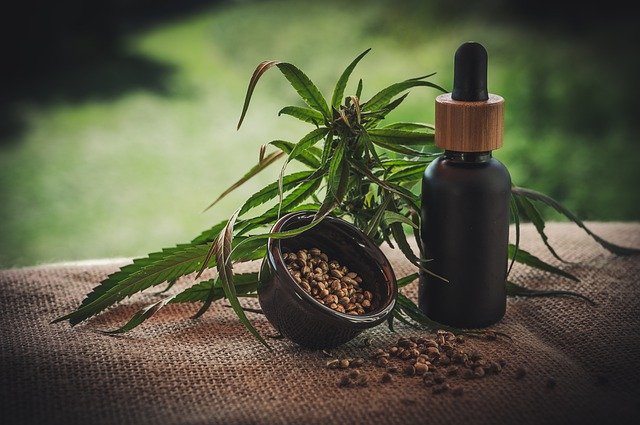CBD and Endocannabinoid System

CBD and endocannabinoid system
Much research has gone into understanding the immense potentialities of Cannabis, a plant that has been in usage for centuries. However, the several decades-long taboos associated with it has ensured its relegation to closed doors, until recently. One of the most promising things to emerge out of this renewed focus on Cannabis is Cannabidiol (CBD), a compound present within the plant. Although the research conducted as of now is not enough to substantively establish it as a definite cure for any health condition, the preliminary results are surely encouraging. At the heart of this exploration lies the Endocannabinoid system (ECS) of the body, a lesser-known system, which governs the action of CBD and other Cannabis-derived cannabinoids on the body.
What is CBD?
The Cannabis plant contains over a hundred compounds, many of which are still undiscovered. The most studied among them are CBD and delta-9- tetrahydrocannabinol (THC). Both CBD and THC trigger reactions inside the body but of very different kinds. While THC is a psychoactive compound capable of causing a 'high' sensation and can even be toxic if consumed in higher amounts, CBD is more of a therapeutic compound. It is non-psychotic, does not affect cognizance or functioning capabilities, and is non-toxic, cannot be overdosed on.
The quality of a particular CBD extract depends upon the species of the Cannabis plant from which it originates. CBD derived from the hemp species (Cannabis sativa) contains traces (<0.3%) of THC, while CBD derived from the marijuana species (Cannabis indica) has a much higher quantity of THC. Therefore, hemp-derived CBD products like CBD Oil Canada are preferred for medicinal purposes.
About the Endocannabinoid System:
The ECS is an evolutionary system which is present in all vertebrates and even some invertebrates. Unlike most other systems in the body, the ECS is spread across the entire body and affects almost all of the organs and parts. Not much information is available about the actual extent of the functions of the ECS. However, according to several studies, it plays a major role in homeostasis and energy regulation, which includes the nervous, immune, and endocrine systems, apart from affecting numerous physiological and psychological functions like appetite, mood, stress, sleep and anxiety.
The ECS comprises three components--the endocannabinoids, the cannabinoid receptors and the enzymes.
The Endocannabinoids:
The bio-synthesized cannabinoids, called endocannabinoids, are lipid-based chemical compounds that act as neurotransmitters. Their production triggers as a response to any external or internal crises, like injury or hunger, in an attempt to maintain the homeostasis. There are two main endocannabinoids, arachidonoyl ethanolamide (anandamide) and 2-arachidonoyl glycerol (2-AG). Although these two have similar chemical structures, they have different physiopathological functions as different enzymes synthesize and degrade them, making them act distinctly.
Anandamides (ananda=bliss) work as mood enhancers and contribute to fear and stress control. Their role in ovulation and pregnancy is also under consideration. They are structurally similar to THC and would have caused a 'high' but their fragility causes them to degrade quite easily after they bind themselves to the receptors, and thus do not persist long enough to induce a THC-like high.
The Receptors:
If the endocannabinoids are keys, then the cannabinoid receptors are locks; when a suitable key fits into a particular lock, a certain reaction takes place. The reactions that cannabinoids produce upon binding with a receptor depends upon the location of that receptor in the body. There are two main receptors, CB1 and CB2, which are present in the brain and other tissues throughout the body.
The CB1 receptors are found majorly in the central nervous system (CNS), and several other organs including the skin, uterus, heart, and small intestine. It is the primary receptor governing the psychotic effects of cannabis.
The CB2 receptors are found in the immune system, and the neuronal (cells found in nerve cells), microglial (cells found in the brain and spinal cord) and vascular (cells found in blood vessels) tissues.
Anandamide has a partial affinity to CB1 and is comparatively even less active at CB2; 2-AG acts with an affinity corresponding to moderate-to-low as a full agonist at both the receptors.
The Enzymes:
The enzymes in the ECS are responsible for the production and degradation of the endocannabinoids; their production is demand-based and their breakdown occurs when they produce a reaction along with the receptors and complete their role. Timely decomposition of the cannabinoids prevents any hyperactivity that might arise due to their over-accumulation.
Fatty Acid Amide Hydrolase (FAAH) is the enzyme tasked with degrading anandamide molecules while Monoglyceride Lipase (MGL) breaks down 2-AG molecules.
Clinical Endocannabinoid Deficiency (CECD):
Since the ECS plays such an important role in the maintenance of bodily composure, any dysfunction within the system can lead to troublesome conditions in the body. This dysfunction can occur due to insufficient build-up of endocannabinoids and, according to available reports, might give way to certain treatment-resistant conditions like migraine, fibromyalgia, and irritable bowel syndrome, to name a few. Additionally, it might cause insomnia, depression, and anxiety disorders.
CBD might prove to be helpful in treating such conditions due to its similarity with the endocannabinoids and can artificially supplement the system to relieve many related symptoms like pain, inflammation, and sensitivity. More research is underway to establish its efficacy.
How does CBD interact with the ECS?
Just like anandamide and 2-AG are two cannabinoids that are synthesized by the body itself, CBD is another cannabinoid that is found in plants. CBD interacts with the body in two ways--by directly binding with the cannabinoid receptors and by acting on enzymes to react differently with the endocannabinoids. CBD binds with the receptors and activates them to produce specific effects. It is this interaction between the two which presents CBD as potentially beneficial in numerous health issues. Topical application or ingestion of CBD allows it to work to treat those issues.
Since the location of a particular receptor determines the reaction that a particular cannabinoid will have on the body, it can be useful in selective treatment of health conditions by careful administration of CBD to act on the affected region, like the treatment of epilepsy using Epidiolex, a cannabis-based FDA approved drug which acts on specific receptors in brain to control seizures.
CBD inhibits the action of FAAH which leads to higher levels of anandamide in the body due to low degradation. This helps in bringing down anxiety as anandamides get more time to act and enhance mood. This contributes to the anxiolytic effect of CBD.
The field related to Cannabis and the ECS is quite new. Not enough evidence is available to back the numerous claims surrounding them. However, as more reliable benefits of CBD and hitherto unknown role of the ECS in the body come to the fore, new avenues for improving bodily health might soon open up.
Leave a comment
Comments will be approved before showing up.
Also in Urban Re-Leaf Candle Blog

Cannabis Gift Guide for the Holidays
Dear Friends,
Happy Holidays! If you're still searching for the perfect gift for friends and family who love the cannabis/ hemp world, here’s my holiday gift guide featuring the best cannabis cookbooks, accessories, infused eats, and infusion devices out now.


